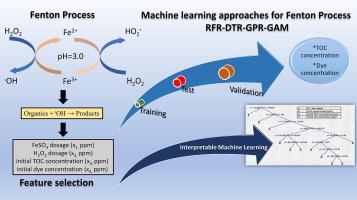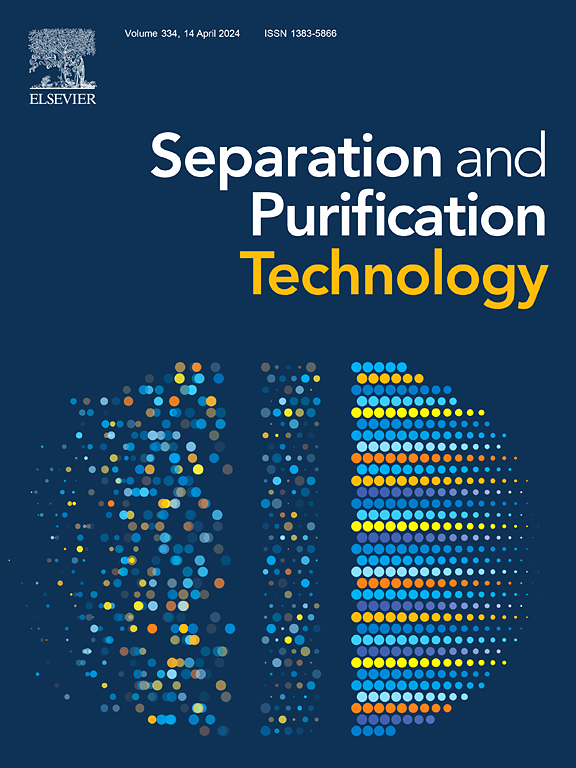Integrating machine learning regression and classification for enhanced interpretability in optimizing the Fenton process for real wastewater treatment conditions
IF 8.1
1区 工程技术
Q1 ENGINEERING, CHEMICAL
引用次数: 0
Abstract
The Fenton process is an important process used in treating textile wastewater such as Jeans-wash wastewater (JWW). Predicting the results of this process according to Fenton parameters is a critical step to evaluating the treatment performance. One of the important ways to improve treatment performance is to use machine learning methods. Therefore, machine learning methods using experimental Fenton treatment data were proposed to mathematically demonstrate the effect of the hydrogen peroxide (H2O2) and iron sulfate (FeSO4) dosage on dye and total organic carbon (TOC) concentration within this research. To increase the predictive capability of machine learning methods, in addition to concentration of H2O2 and FeSO4 inputs, dye and TOC initial concentration values were used as inputs in the machine learning methods. Four regression techniques were used to forecast the dye and TOC concentration outputs of Fenton process, namely Random Forest Regression (RFR), Gaussian Process Regression (GPR), Decision Tree Regression (DTR), and Generalized Additive Model (GAM) in this study. Hold-out and k-fold cross-validation were used in combination to examine the effectiveness of the suggested regression techniques. Among these machine learning methods, GPR was more successful than the other proposed models with predicted the dye concentration as R2 > 0.97 and TOC concentration as R2 > 0.86. Finally, illustration of decision tree classifiers indicating the process operation were placed with interpretable machine learning. With these trees, the input-range/target result relationship depending on the input parameters of the process was established to eliminate the side reactions that occur due to the nature of the Fenton process.


求助全文
约1分钟内获得全文
求助全文
来源期刊

Separation and Purification Technology
工程技术-工程:化工
CiteScore
14.00
自引率
12.80%
发文量
2347
审稿时长
43 days
期刊介绍:
Separation and Purification Technology is a premier journal committed to sharing innovative methods for separation and purification in chemical and environmental engineering, encompassing both homogeneous solutions and heterogeneous mixtures. Our scope includes the separation and/or purification of liquids, vapors, and gases, as well as carbon capture and separation techniques. However, it's important to note that methods solely intended for analytical purposes are not within the scope of the journal. Additionally, disciplines such as soil science, polymer science, and metallurgy fall outside the purview of Separation and Purification Technology. Join us in advancing the field of separation and purification methods for sustainable solutions in chemical and environmental engineering.
 求助内容:
求助内容: 应助结果提醒方式:
应助结果提醒方式:


